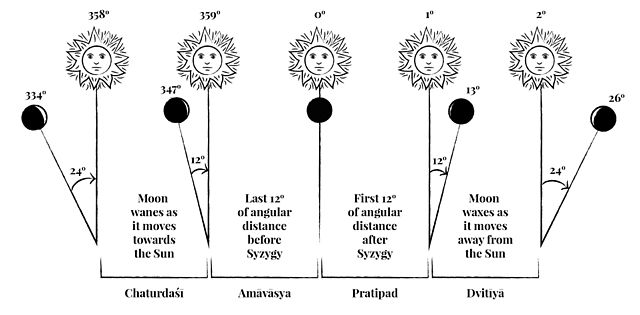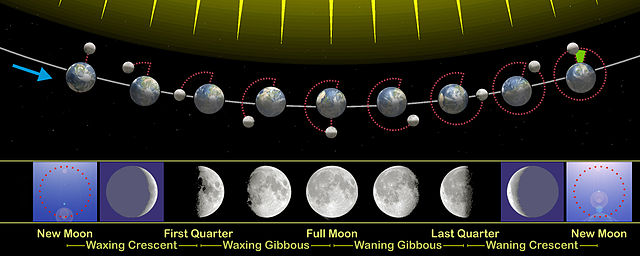In astronomy, the new moon is the first lunar phase, when the Moon and Sun have the same ecliptic longitude. At this phase, the lunar disk is not visible to the naked eye, except when it is silhouetted against the Sun during a solar eclipse.
A simulated image of the traditionally defined new Moon: the earliest visible waxing crescent (lower right), which signals the start of a new month in many lunar and lunisolar calendars. At new moon, mostly earthlight illuminates the near side of the Moon.
Amavasya and Prathama tithi
A lunar phase or Moon phase is the apparent shape of the Moon's directly sunlit portion as viewed from the Earth. In common usage, the four major phases are the new moon, the first quarter, the full moon and the last quarter; the four minor phases are waxing crescent, waxing gibbous, waning gibbous, and waning crescent. A lunar month is the time between successive recurrences of the same phase: due to the eccentricity of the Moon's orbit, this duration is not perfectly constant but averages about 29.5 days.
A full moon sets behind San Gorgonio Mountain in California on a midsummer's morning.
The phases of the Moon as viewed looking southward from the Northern Hemisphere. Each phase would be rotated 180° if seen looking northward from the Southern Hemisphere. The upper part of the diagram is not to scale, as the Moon, the Earth, and the Moon's orbit are all much smaller relative to the Earth's orbit than shown here.
An overexposed photograph of a crescent Moon reveals earthshine and stars.
A crescent Moon over Kingman, Arizona






